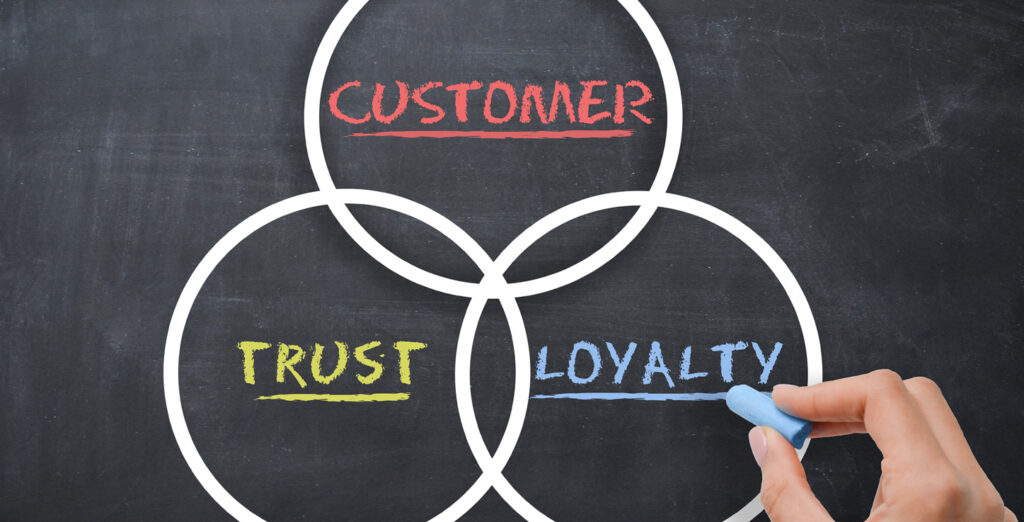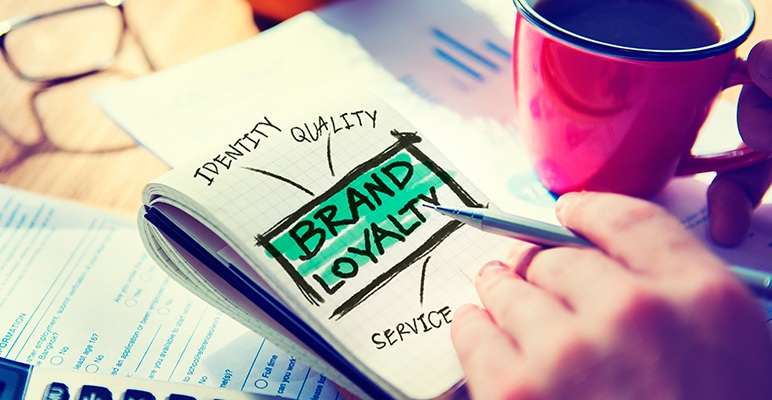Marketing has changed significantly over the years and new technologies always find a way to revolutionize something we once thought to be written in stone. One example is the notion of brand loyalty and how well-implemented loyalty programs for customers can help boost our marketing performance.
Old-school marketers will often cite the classic marketing funnel as a model to describe the journey of a potential customer turned paying customer. There exist a few different variations, with the most well-known version coming from the advertising advocate E. St. E. Lewis.
Dubbed the AIDA model for its four stages, the funnel describes how a company must first garner attention by making potential customers aware of its existence, then garner interest via marketing until there is a desire to purchase the product or service. The last step, action, is where the now interested person finally purchases the product or service, whereupon they exit the funnel and can rejoin the mass of potential customers, to perhaps travel through the funnel once more.

As with all models, however, this funnel is a highly simplified and generalized view of how a potential customer will interact with your brand. Being over 100 years old it is simply outdated, despite some key facts still holding true.
According to LoyaltyLion, it is very important that you show your customers that you value them. This is the first step in building a personal relationship. Keep in mind that your most profitable customers aren’t the ones that bring you a large income. When you look deeper into the issue, you will see that the best customers are the ones that are brand advocates. These customers are highly satisfied and loyal to your brand, so they will keep recommending it to others.
It is, of course, important to first cast a sizeable net into the sea of potential customers by making them aware that you and your products exist. The conversion of an interested person into a paying customer also remains the focal point of marketing and sales as a whole. However, if communication science has taught us anything, it is that the recipient is anything but a passive entity. Indeed, consumers are becoming increasingly self-informed and are never just subject to the brand’s broadcasting. Many customers won’t turn to the information that a company offers about their brand. They will look to peers for their recommendations and experiences. With the advent of Social Media, amateur communication is at an all-time high. People can create groups, where they can ask for a brand recommendation that will suit their needs. Or, they will simply read the reviews left by previous customers on your page. If the process of selling a service of a product isn’t straightforward or has gaps, it is very likely that your unsatisfied customers will spread the word.

To understand what this means for brands, you need to be aware of how this changes the marketing funnel. First, a consumer who was successfully converted into a paying customer isn’t simply expelled from the funnel with a clean slate. They will remember how the product or service performed, as well as how positive or negative their interactions with the company were. This will then not the only factor into their decision of becoming a repeat customer but will also have an effect on other interested consumers in all phases of the funnel, by word-of-mouth or even some means of broadcasting. They can express their opinion in the form of a written review, or just spread the word to their acquaintances. So, once a consumer has gone through the funnel (even if they decide to bail out halfway through), they become a permanent influence that can not be controlled by the brand. It is up to the brand to improve the overall experience of the customer, from start to finish to ensure that the customer will be satisfied.
So, how does a modern marketing funnel look like and what can a brand do positively influence it? In an ideal world, the funnel will funnel into itself, effectively becoming a loop, as converted customers will be more likely to re-enter it because of their positive experience with the product and the brand. In other words, we should be talking about a marketing loop that is self-reinforcing and, in theory, infinite. Here is where brand loyalty comes into play.
We have learned that consumers will share their experiences with their peers, so if we as a brand ensure they have the best possible experience, they have the potential to turn into brand advocates. they will simply recommend the brand to everyone and spread positivity. To do this, we must not only offer a good product and excellent customer support, but we also need to try and keep our customers with us. As a brand, we should allow a straightforward and satisfying experience throughout the whole process. But, we also should know that our actions don’t simply end with a purchase by their side. The marketing activities should continue to put efforts to collect the feedback from the customer, which will help improve the services and make them better.

Having loyal customers isn’t only considered because it will bring a stable revenue for the company. Them spending money is only secondary to their most important strength – Generating buzz and widening the net we cast in the attention phase of the funnel, completely naturally and without the often-criticized ‘corporate speak’. Letting the pleased customers speak of your service or product enjoys far more credibility when compared to the corporate speak. Potential customers are more likely to first check the opinion of their acquaintances, rather than what the company says about their brand. People will trust their friends and relatives and hear about their recommendations. When you have built a whole network of people that are brand advocates and will speak the best for your product or service, the number of new customers will increase. Therefore, generating brand loyalty is not only the best way to maintain your current customers, but also to attract entirely new ones.





